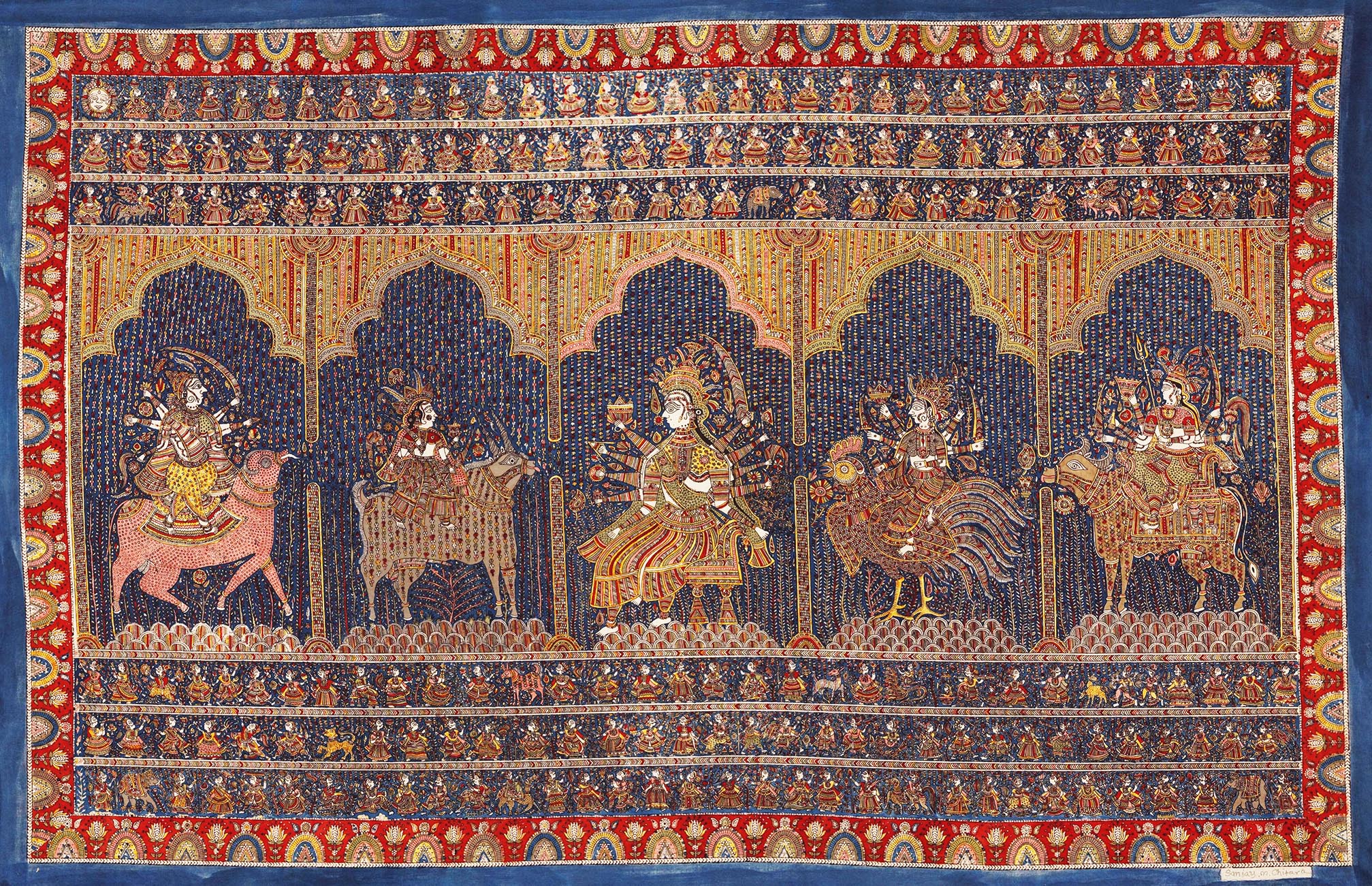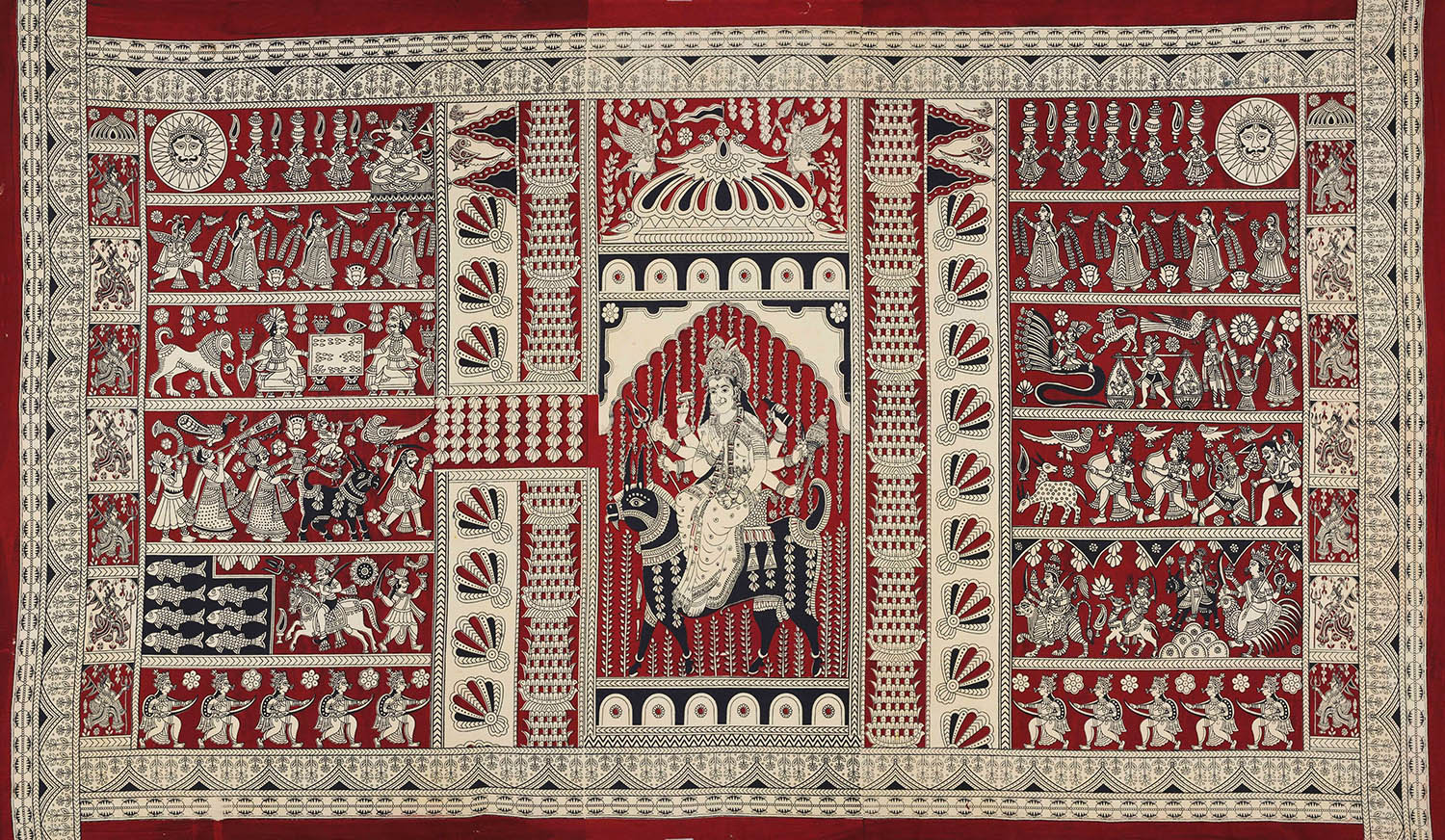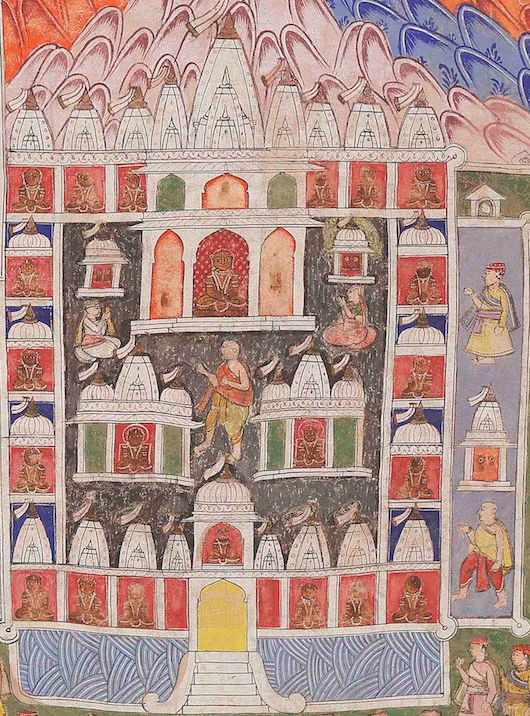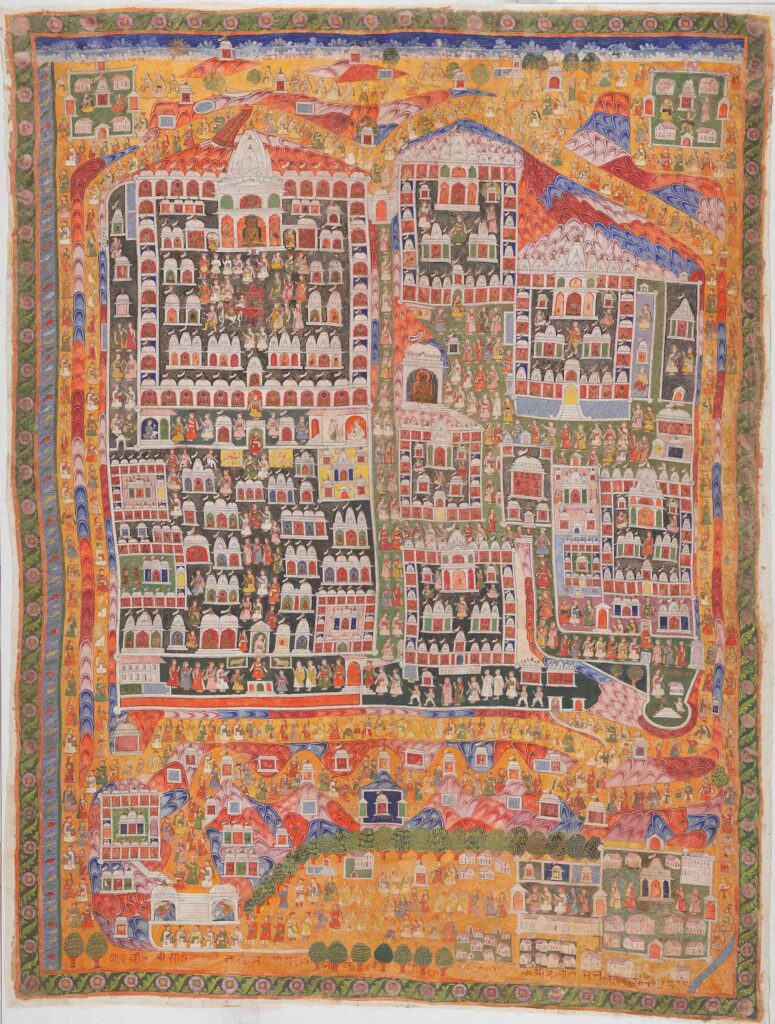
Shatrunjaya pata, 1967, unidentified artist, natural pigments and water-based colours on canvas © Sarmaya Arts Foundation 2019.20.1
In the 18th and 19th centuries, Shatrunjaya patas functioned as map, photograph, souvenir and shrine all rolled into one. Shatrunjaya is a hill in Palitana, Gujarat, which is home to the principal temple of Adishvara, the first Jain Tirthankara or spiritual leader. The three-hour trek to the summit is also the most important pilgrimage for Jains of the Shvetambara sect to undertake. The patas (cloth paintings) that commemorate this journey are intricate, large-scale renditions of this particular landscape.
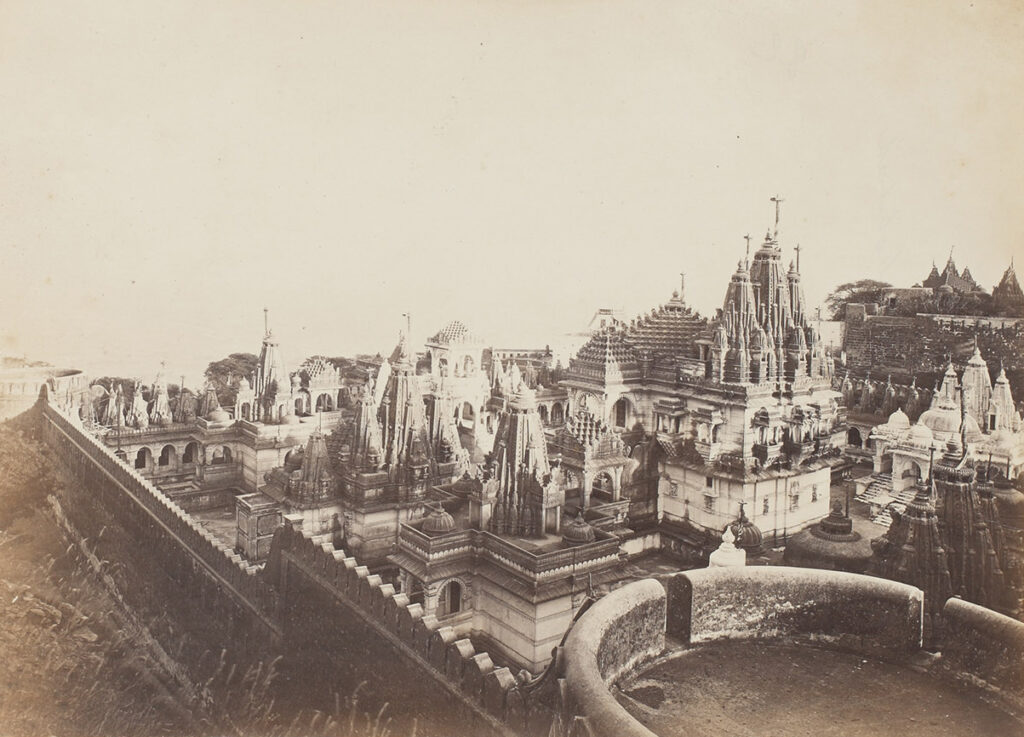
View of Palitana, c.1867-68, Edmund David Lyon © Sarmaya Arts Foundation
On a Shatrunjaya pata, the main temple is always located on the top left corner, while the remainder of the canvas is filled in with devotees and monks snaking up the hill, smaller shrines enclosed in square grids, the flora and fauna of the region, and the Shetrunji River. Although the artist makes no attempt to accurately capture scale or perspective, certain aspects remain true to life, like the winding path approaching the temple. This allows believers to experience the yatra in their mind and receive darshan from a distance.
Sacred banners
In South Asian religious practices, darshan or seeing the idol in person is fundamental to worship.1 Similar to Buddhists and Hindus, Jains attach great importance to pilgrimages. Tirtha patas or pilgrimage banners are especially popular with Shvetambara Jains.2 While its exact origins are unknown, these patas had become fairly popular by the 15th Century.
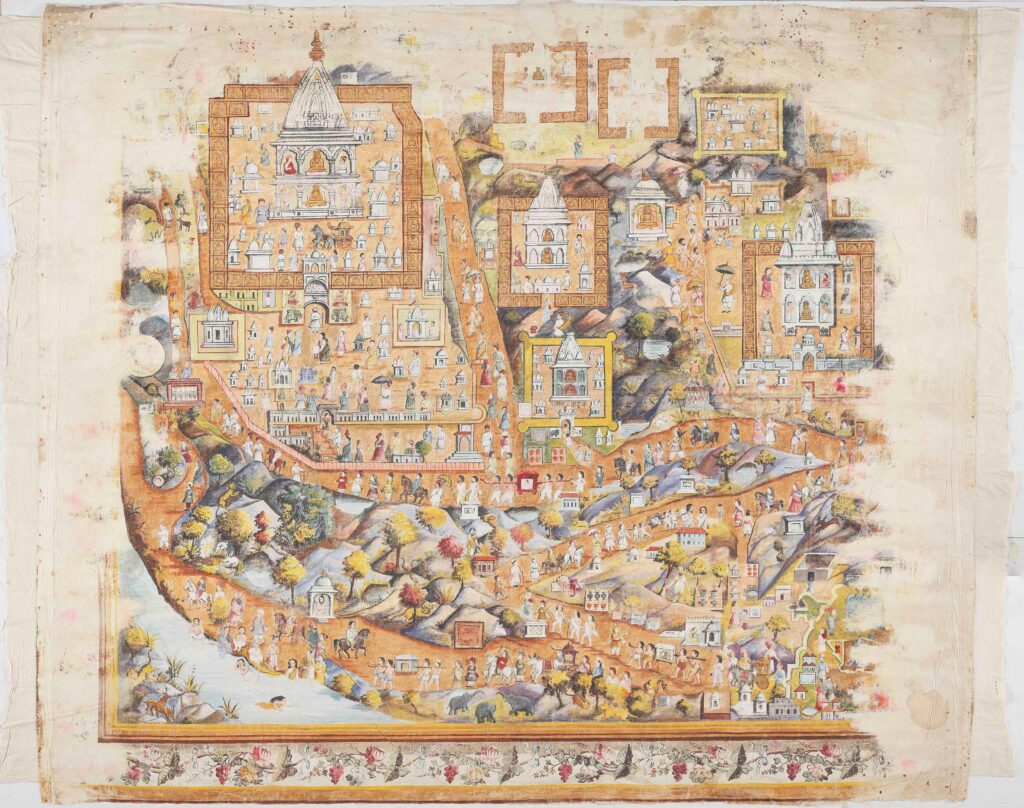
Shatrunjaya tirtha pata, 20th century, unidentified artist, natural pigments and gouache on cotton cloth © Sarmaya Arts Foundation 2018.13.5
During the 18th and 19th centuries, Shatrunjaya patas assumed monumental proportions (some over a metre in width and height), with entire paintings devoted to a single site.2 Over time, the depiction of the hill changed from an abstract place to one that was clearly distinguishable for its architectural and topographical features.3 It is also believed that, apart from temple murals, tirtha patas are the largest Indian paintings to have survived into the modern day.2
Painting a pata
The Mathen community, based in Jodhpur and Bikaner during the 18th and 19th centuries, were responsible for the production of Shatrunjaya patas.3 Both coarse and finely woven cotton and linen were used for the purpose.2 There were four stages of painting: the canvas was washed (dhauta), burnished (ghattita), drawn upon (lanchchhita), and coloured (ranjita). The cloth was first primed with wheat- or-rice-flour paste, or tamarind paste, to fill up the pores of the textile. After the priming was completely dry, the surface was burnished with agate.2
A dramatic innovation was the introduction of new pigments, such as ultramarine from lapis lazuli, crimson from lac, and gold.4 With Mughal painting extending its reach beyond the courts of Delhi, the influence of Persian illumination can be seen in the flamboyant borders4 of the patas. Curiously, the opulence of these paintings was often at odds with the spiritual teachings of the subjects depicted, who encouraged detachment from materialism.4 But, as with Jain temple architecture, wealthy patrons often commissioned luxuriant works, which were also sublime and uplifting.
Guide before guidebooks
Shatrunjaya patas were meant to evoke the ‘bhava’ of a place. An evocation of emotional experience distinguishes them from cartographic objects as we understand them today.1 This belief in their inherent power is confirmed by the fact that they were often stored within Jain temple libraries, rather than in private homes.3
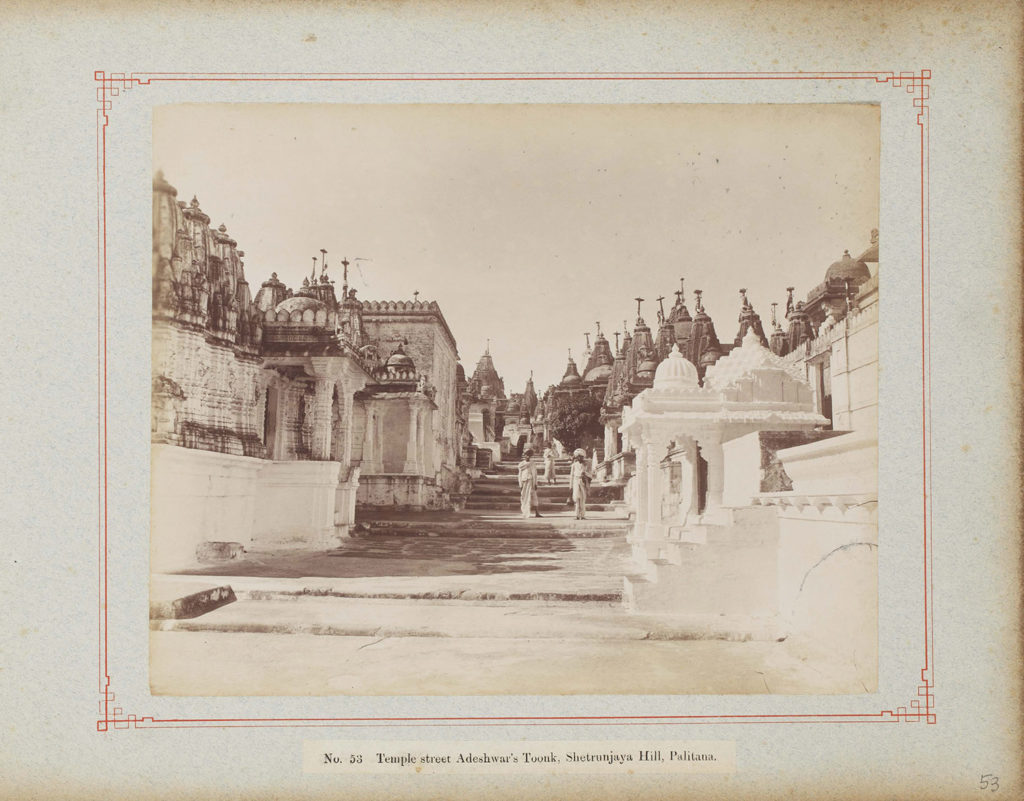
Temple Street Adeshwar toonk, Shetrunjaya Hill, Palitana, c.1867-68, Edmund David Lyon © Sarmaya Arts Foundation
The primary aim of Jain pilgrimage is spiritual edification.5 It is probably why the Jains have generally selected mountain-tops as their tirtha-kshetras, far from human habitation and conducive to meditation and spiritual contemplation.5 No doubt, art was used to serve as hand-maid to religion, but it also helped to soften the austerity of the path.5 As such, Shatrunjaya patas served a far higher purpose than just being beautiful field guides. They were created to participate in and foster the cartography of belief.
References
- Kamayani Sharma, How medieval Jain pilgrimage maps afforded the faithful a darshan without any travel,in
- Shridhar Andhare, Jain Monumental Painting, The Peaceful Liberators: Jain Art from India
- Hawon Ku Kim, Re-formation of Identity: the 19th-century Jain Pilgrimage Site of Shatrunjaya, Gujarat
- John Guy, Jain Manuscript Paintings, The Peaceful Liberators: Jain Art from India
- Jyoti Prasad Jain, The Genesis and Spirit of Jaina Art, Jaina Art and Architecture

